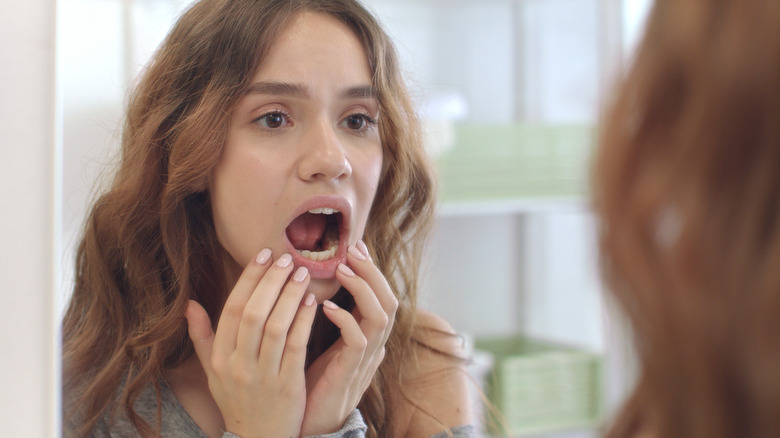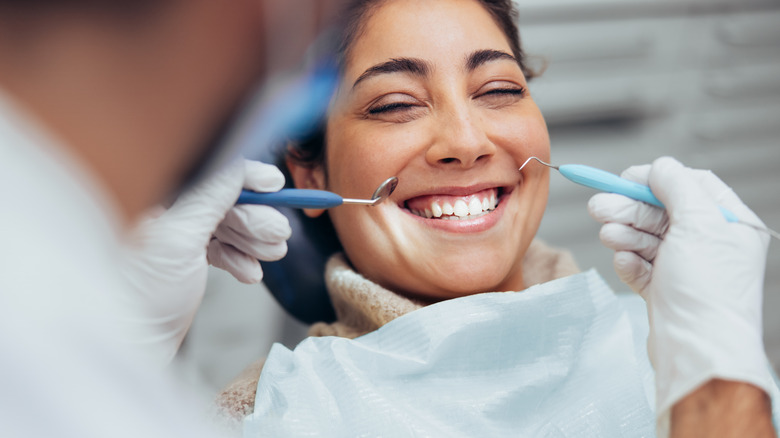This Is How Your Teeth Change After You Turn 30
We go through different stages in our lives, and so do our teeth. As children, our first dental milestone was marked by our first tooth. As adolescents, our teeth began to shift. As a result, many of us donned braces while walking down our middle school hallways.
Just like any other area of the body, our mouth requires special care and attention. According to the Marshfield Clinic Health System, routine brushing and flossing can help prevent ongoing dental issues such as gum disease, cavities, and tooth decay when coupled with regular dental checkups. Neglecting our dental health can result in pain and sensitivity, tooth loss, speech difficulties, and even be an indication of additional health problems, such as heart disease and diabetes. That's why the National Health Service (NHS) stresses the importance of brushing our teeth twice daily for a total of 2 minutes using fluoride toothpaste.
Assuming we've been diligent about our dental care over the last 30 years, can we still expect dental changes well into our 30s and beyond? If so, are these changes for better or worse?
How stress and hormonal changes can affect your teeth
The good news is that by the time you reach 30, you are most likely reaping the rewards of good dental hygiene if you've kept up with it. According to Hagerman Dental Care, dental issues you may have experienced in your teens or 20s have generally lessened by the time you're in your 30s.
However, this does not mean that you aren't susceptible to changes in your teeth after your 20s. When we turn 30, lifestyle factors begin to play a larger role in the health of our teeth. Stress, whether it be from a job or the demands of day-to-day life, can set in during your 30s. As a result, you may be more susceptible to teeth grinding, which can lead to increased tooth sensitivity, according to Hagerman Dental Care. For those who choose to have children in their 30s, flossing is particularly important during pregnancy, as hormonal changes have been linked to the development of gum disease.
What we drink in our 30s can change the color of our teeth
Additionally, experts say we are more prone to teeth staining and enamel erosion as we age — especially as we continue to enjoy acidic beverages, like coffee and wine, well into our 30s (via The Manual). According to Dr. Jon Marashi, the natural age-related thinning of our teeth can lead to changes in color. "While people believe this is simply caused from enjoying too much coffee and red wine, this can actually be a sign of internal staining," Dr. Marashi told The Manual. "The internal color of the tooth turns to a dark yellow/orangey brown shade over time, and as your enamel thins out, more of this dark internal color will show through."
While some of these natural changes in our teeth may be out of our control, we can help keep our teeth healthy with proper oral hygiene and regular dental visits throughout our 30s and beyond.


